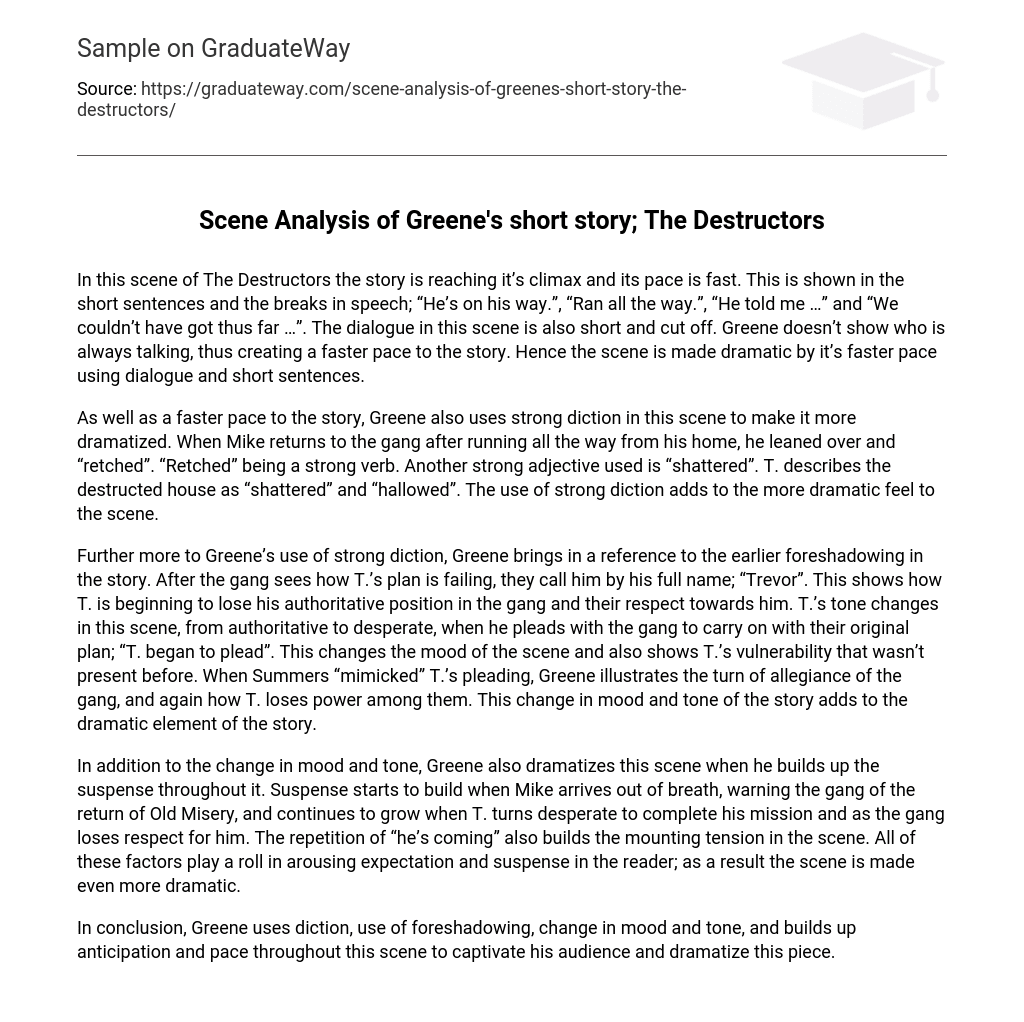In this scene of The Destructors the story is reaching it’s climax and its pace is fast. This is shown in the short sentences and the breaks in speech; “He’s on his way.”, “Ran all the way.”, “He told me …” and “We couldn’t have got thus far …”. The dialogue in this scene is also short and cut off. Greene doesn’t show who is always talking, thus creating a faster pace to the story. Hence the scene is made dramatic by it’s faster pace using dialogue and short sentences.
As well as a faster pace to the story, Greene also uses strong diction in this scene to make it more dramatized. When Mike returns to the gang after running all the way from his home, he leaned over and “retched”. “Retched” being a strong verb. Another strong adjective used is “shattered”. T. describes the destructed house as “shattered” and “hallowed”. The use of strong diction adds to the more dramatic feel to the scene.
Further more to Greene’s use of strong diction, Greene brings in a reference to the earlier foreshadowing in the story. After the gang sees how T.’s plan is failing, they call him by his full name; “Trevor”. This shows how T. is beginning to lose his authoritative position in the gang and their respect towards him. T.’s tone changes in this scene, from authoritative to desperate, when he pleads with the gang to carry on with their original plan; “T. began to plead”. This changes the mood of the scene and also shows T.’s vulnerability that wasn’t present before. When Summers “mimicked” T.’s pleading, Greene illustrates the turn of allegiance of the gang, and again how T. loses power among them. This change in mood and tone of the story adds to the dramatic element of the story.
In addition to the change in mood and tone, Greene also dramatizes this scene when he builds up the suspense throughout it. Suspense starts to build when Mike arrives out of breath, warning the gang of the return of Old Misery, and continues to grow when T. turns desperate to complete his mission and as the gang loses respect for him. The repetition of “he’s coming” also builds the mounting tension in the scene. All of these factors play a roll in arousing expectation and suspense in the reader; as a result the scene is made even more dramatic.
In conclusion, Greene uses diction, use of foreshadowing, change in mood and tone, and builds up anticipation and pace throughout this scene to captivate his audience and dramatize this piece.





